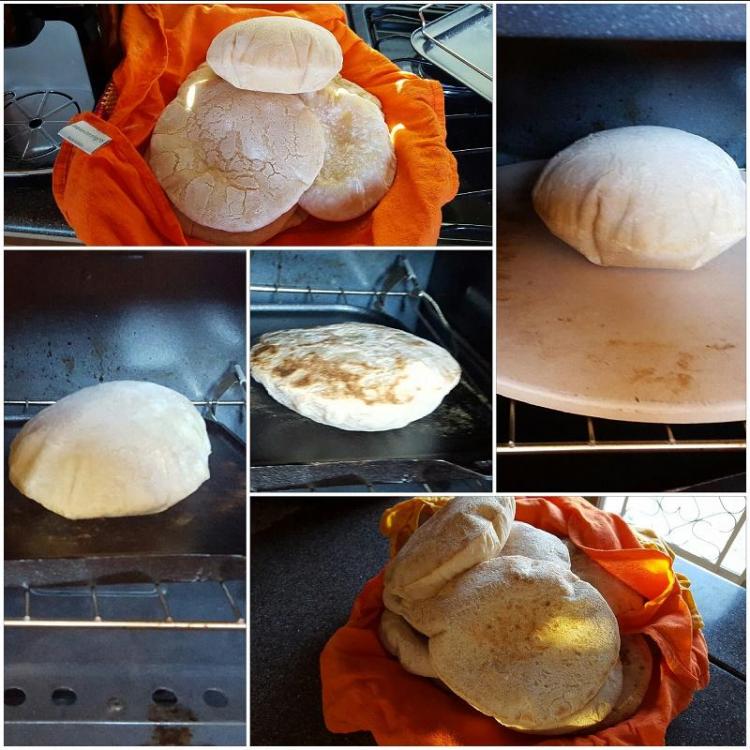On 2/20/2016 at 1:57 AM, Thanks for the Crepes said:@SmithyI'd love to hear about your working hypotheses on pita-making.
It's a dish I have not made, but have interest in, and yours look very much like something I would love to make and eat.
A new day, a new batch of pita. I think I have it down again. Here are the factors I think affect the quality of the pita (in addition to the dough recipe). I plan to elaborate on these in a dedicated pita topic, in hopes of reviving that discussion, so this may seem sketchy.
- Smoothness and thorough kneading of the dough
- Dough ball size - I had best luck between 100g and 150g
- Thickness of the rolled-out disk of dough - mine were between 1/4" and 1/8" thick
- Dough ball moisture - too dry or too damp causes problems for forming and handling the rolled-out disk (not to mention the rising dough balls)
- Baking surface heat (my oven thermometer says it needs to be at least 440oF)
This time I did roughly half the batch on the baking stone and the remainder on the cast iron griddle, so I can discuss the comparison also. The ceramic baking stone seemed a bit more forgiving about temperature range - it wouldn't overcook the bread at 450F - but it didn't brown the dough. The cast iron griddle actually browned the dough, but if it was too hot the dough cooked too quickly and came out with a flattened sear instead of a nice round puff. That's visible in the center image in this collage.
Feel free to ask questions or make comments here, but I'll be posting more detail in this topic, in hopes of more discussion: Perfect Pita: The secret to thin pita with good puff.


